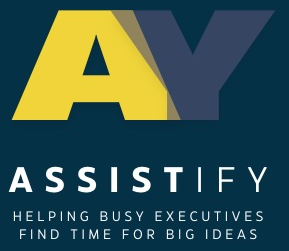In the dynamic world of construction, small and medium-sized businesses (SMBs) and solopreneurs face a myriad of challenges that can hinder growth and efficiency. Balancing administrative tasks, managing client relationships, and coordinating projects often feels like juggling without a safety net. Add limited resources, labor shortages, and complex compliance requirements to the mix, and the task becomes even more daunting.
Enter the Virtual Assistant. These tech-savvy professionals are revolutionizing the way businesses operate by providing much-needed support that can streamline operations and reduce workloads. But how exactly can a Virtual Assistant transform your construction business? By leveraging AI-trained virtual assistants, you can not only improve overall business efficiency but also focus on what truly matters: growing your business.
At Assistify, we understand the unique challenges faced by North American companies in the construction industry. Our tailored solutions connect you with top-tier Latin American Virtual Assistants who specialize in executive and administrative support. This approach not only reduces overhead costs but also provides access to a global talent pool in similar time zones, ensuring seamless team integration.
In this article, we will explore the key obstacles SMBs and solopreneurs encounter in construction and how Virtual Assistants can help you overcome them. From boosting productivity to optimizing operations, discover how this innovative solution can be a game-changer for your business. Let’s dive into the benefits and practical applications of integrating Virtual Assistants into your workflow.
Key Challenges Faced by SMBs in Construction
Small and medium-sized businesses (SMBs) in the construction industry encounter a range of challenges that can significantly impact their growth and operational efficiency. These obstacles often stem from limited resources, labor shortages, and complex compliance requirements. Understanding these challenges is crucial for SMBs to devise effective strategies and leverage solutions like Virtual Assistants to overcome them.
In this section, we will explore some of the most common challenges faced by SMBs in the construction sector, supported by industry statistics and insights from experts. By identifying these hurdles, businesses can better prepare and adapt to the dynamic construction landscape.
Limited Resources
One of the primary challenges for SMBs in construction is the limitation of resources. This includes financial constraints, insufficient manpower, and inadequate access to advanced technology. According to a report by the Construction Industry Institute, small construction firms often struggle to secure financing for large projects, limiting their ability to expand and compete with larger companies.
Moreover, the lack of resources can hinder the adoption of new technologies that could streamline operations and improve productivity. For instance, implementing project management software or advanced construction tools requires investment that many SMBs find challenging to afford. This financial strain can lead to inefficiencies and missed opportunities in a highly competitive market.
Labor Shortages
Labor shortages are another significant hurdle for SMBs in the construction industry. The U.S. Chamber of Commerce reports that 83% of contractors face moderate to high levels of difficulty in finding skilled workers. This shortage not only delays project timelines but also increases labor costs, affecting the overall profitability of construction businesses.
To combat this issue, SMBs are increasingly turning to innovative solutions such as hiring Virtual Assistants to handle administrative tasks, allowing them to focus on core construction activities. This approach not only alleviates some of the workload but also optimizes resource allocation, enabling businesses to operate more efficiently.
Complex Compliance Requirements
Compliance with industry regulations and standards is a critical aspect of the construction business. However, navigating these complex requirements can be daunting for SMBs. The National Association of Home Builders highlights that regulatory costs account for nearly 25% of the price of a new home, illustrating the significant impact of compliance on construction costs.
SMBs must stay updated with ever-changing regulations, which can be resource-intensive and time-consuming. Here, Virtual Assistants can play a pivotal role by assisting with research, documentation, and ensuring that all compliance measures are met. This not only reduces the burden on SMBs but also minimizes the risk of costly fines and legal issues.
By understanding and addressing these challenges, SMBs in construction can enhance their operational efficiency and position themselves for growth. Leveraging the expertise of Virtual Assistants offers a viable solution to navigate these obstacles effectively.
Benefits of Hiring Virtual Assistants in Construction
The construction industry is constantly evolving, and small to medium-sized businesses (SMBs) must adapt to stay competitive. Hiring a Virtual Assistant offers numerous advantages that can significantly enhance operational efficiency and drive growth. From cost savings to increased productivity, the benefits are extensive and impactful.
One of the most compelling reasons to hire a Virtual Assistant is the potential for substantial cost savings. Traditional hiring processes involve expenses related to recruitment, training, and benefits. In contrast, virtual assistants are typically independent contractors, eliminating the need for costly benefits packages. This arrangement allows businesses to allocate resources more effectively and invest in other critical areas.
Moreover, virtual assistants provide access to a global talent pool. At Assistify, we connect North American companies with top-tier Latin American Virtual Assistants. This approach not only ensures cultural alignment due to similar time zones but also brings diverse perspectives and skills to the table. By tapping into this talent pool, businesses can find the perfect fit for their specific needs, enhancing both efficiency and innovation.
- Cost Savings: Reduce overhead costs by hiring virtual assistants who do not require traditional employee benefits.
- Increased Productivity: Delegate administrative tasks to focus on core business activities, leading to improved performance.
- Access to Global Talent: Leverage diverse skills and perspectives from a global workforce, ensuring the best fit for your business needs.
- Flexibility: Scale your team up or down based on project demands without the constraints of long-term commitments.
- Enhanced Focus: Free up time for strategic planning and business development by outsourcing routine tasks.
Real-world examples abound of companies that have successfully integrated virtual assistants into their operations. For instance, a mid-sized construction firm in Texas reported a 30% increase in project completion rates after hiring virtual assistants to manage scheduling and client communications. This not only improved client satisfaction but also allowed the company to take on more projects, boosting revenue.
Testimonials from satisfied clients further illustrate the transformative impact of virtual assistants. “Our virtual assistant has been a game-changer,” says John Doe, CEO of a leading construction company. “Their expertise in administrative support has allowed us to focus on what we do best—building quality structures.”
By embracing the benefits of hiring a Virtual Assistant, construction SMBs can overcome industry challenges and position themselves for long-term success. Explore more about how virtual assistants can revolutionize your business by visiting Assistify.
How to Choose the Right Virtual Assistant for Your Business
Choosing the right Virtual Assistant is essential for maximizing the benefits they can bring to your business. With the right fit, you can enhance productivity, streamline operations, and focus on core activities. However, the selection process can be daunting, given the myriad of options available. By following a structured approach, you can ensure you find a virtual assistant who aligns with your business needs and culture.
In this section, we’ll guide you through a step-by-step process to evaluate and select the ideal virtual assistant. From assessing skills and experience to ensuring cultural fit, these steps will help you make an informed decision.
Step 1: Define Your Needs
Begin by clearly identifying the tasks you want your Virtual Assistant to handle. Are you looking for administrative support, project management, or specialized skills like graphic design? Defining these needs will guide your search and help you create a detailed job description.
Consider the level of expertise required and whether the tasks are ongoing or project-based. This clarity will not only streamline the hiring process but also ensure you attract candidates with the right qualifications.
Step 2: Evaluate Skills and Experience
Once you have a list of potential candidates, assess their skills and experience. Look for virtual assistants who have a proven track record in your industry or with the tasks you need help with. Check their portfolios and client testimonials to gauge their proficiency and reliability.
Conduct skills assessments or request work samples to verify their abilities. This step is crucial to ensure the virtual assistant can meet your expectations and deliver quality results.
Step 3: Assess Cultural Fit
Cultural fit is as important as skills and experience. A virtual assistant who aligns with your company values and work culture will integrate more seamlessly into your team. During interviews, discuss your company’s mission and values to see if the candidate resonates with them.
Consider factors like communication style, time zone compatibility, and language proficiency. These elements play a significant role in ensuring smooth collaboration and effective communication.
Step 4: Conduct Interviews
Interviews are a critical part of the selection process. Prepare a set of questions that cover both technical skills and soft skills. Ask about their problem-solving abilities, time management, and how they handle feedback.
Use this opportunity to assess their enthusiasm and commitment to the role. A candidate who shows genuine interest and understanding of your business is likely to be a valuable asset.
Step 5: Make a Decision
After evaluating all aspects, it’s time to make a decision. Consider all the information gathered during the process and trust your instincts. Choose a virtual assistant who not only meets the technical requirements but also fits well with your team dynamics.
Once selected, communicate your decision promptly and outline the next steps. This ensures a smooth onboarding process and sets the stage for a successful working relationship.
By following these steps, you can confidently choose a Virtual Assistant who will help your business thrive. For more insights on hiring and integrating virtual assistants, visit Assistify.
Unlocking Potential: Transform Your Construction Business with Virtual Assistants
The construction industry is fraught with challenges, especially for small and medium-sized businesses (SMBs) and solopreneurs. However, embracing the power of Virtual Assistants can be a game-changer. These professionals not only alleviate administrative burdens but also enhance overall business efficiency. By integrating virtual assistants into your workflow, you can focus on strategic growth and innovation, leaving routine tasks to skilled experts.
Key benefits of hiring a virtual assistant include:
- Cost Savings: Eliminate expenses related to recruitment, training, and benefits by opting for independent contractors.
- Increased Productivity: Delegate tasks to focus on core business activities and improve performance.
- Global Talent Access: Connect with diverse professionals who bring unique skills and perspectives.
- Flexibility: Scale your team according to project demands without long-term commitments.
By partnering with platforms like Assistify, businesses can seamlessly integrate top-tier Latin American virtual assistants into their teams. This approach not only fosters cultural alignment but also ensures quality support in similar time zones. The result is a more agile, efficient, and competitive business.
Ready to revolutionize your construction business? Explore the potential of virtual assistant services at Assistify and take the first step towards unlocking new growth opportunities. Share your thoughts or questions in the comments below, and join the conversation about how virtual assistants can transform your industry experience!



